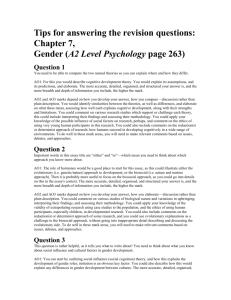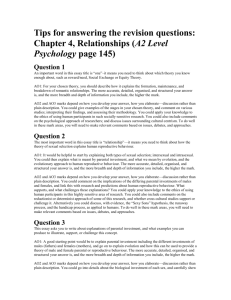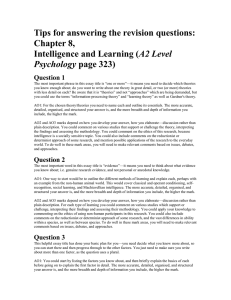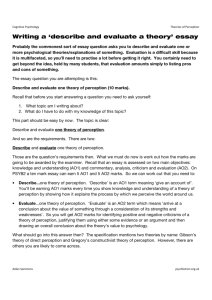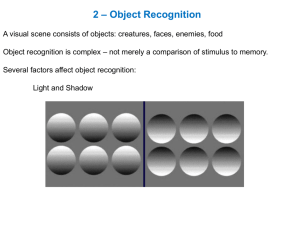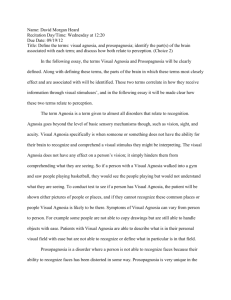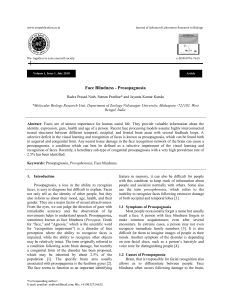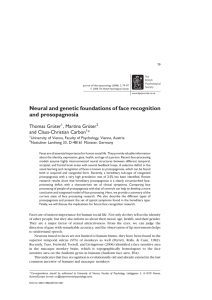Tips for answering the revision questions: Chapter 3
advertisement
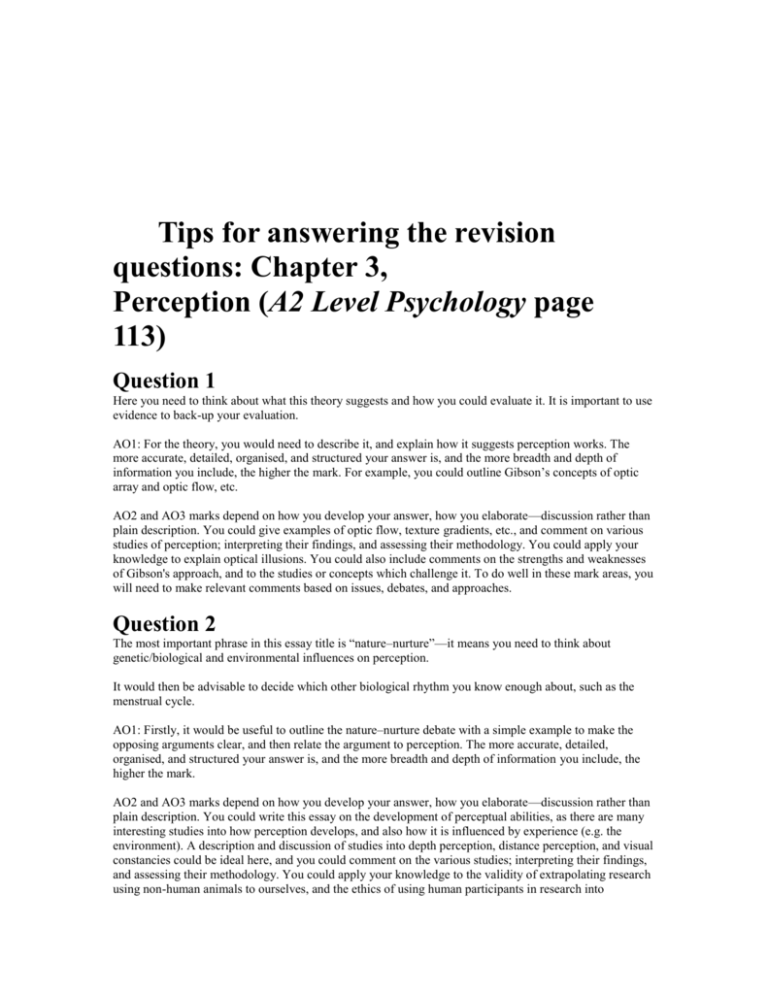
Tips for answering the revision questions: Chapter 3, Perception (A2 Level Psychology page 113) Question 1 Here you need to think about what this theory suggests and how you could evaluate it. It is important to use evidence to back-up your evaluation. AO1: For the theory, you would need to describe it, and explain how it suggests perception works. The more accurate, detailed, organised, and structured your answer is, and the more breadth and depth of information you include, the higher the mark. For example, you could outline Gibson’s concepts of optic array and optic flow, etc. AO2 and AO3 marks depend on how you develop your answer, how you elaborate—discussion rather than plain description. You could give examples of optic flow, texture gradients, etc., and comment on various studies of perception; interpreting their findings, and assessing their methodology. You could apply your knowledge to explain optical illusions. You could also include comments on the strengths and weaknesses of Gibson's approach, and to the studies or concepts which challenge it. To do well in these mark areas, you will need to make relevant comments based on issues, debates, and approaches. Question 2 The most important phrase in this essay title is “nature–nurture”—it means you need to think about genetic/biological and environmental influences on perception. It would then be advisable to decide which other biological rhythm you know enough about, such as the menstrual cycle. AO1: Firstly, it would be useful to outline the nature–nurture debate with a simple example to make the opposing arguments clear, and then relate the argument to perception. The more accurate, detailed, organised, and structured your answer is, and the more breadth and depth of information you include, the higher the mark. AO2 and AO3 marks depend on how you develop your answer, how you elaborate—discussion rather than plain description. You could write this essay on the development of perceptual abilities, as there are many interesting studies into how perception develops, and also how it is influenced by experience (e.g. the environment). A description and discussion of studies into depth perception, distance perception, and visual constancies could be ideal here, and you could comment on the various studies; interpreting their findings, and assessing their methodology. You could apply your knowledge to the validity of extrapolating research using non-human animals to ourselves, and the ethics of using human participants in research into perception. You could also include comments on the reductionist or determinist approach of researchers. To do well in these mark areas, you will need to make relevant comments based on issues, debates, and approaches, and cross-cultural studies would fit in very well in this area. Question 3 a) The most important words in this essay question are “prosopagnosia, face recognition, and case studies”—it means you need to think about what prosopagnosia actually is, the research and explanations of this condition, and how we recognise people. b) It would then be advisable to decide which case studies you know enough about, such as Edward or CK. AO1: For Bruce and Young's theory, you would need to explain i.e. “describe” it, and include a description of each of the eight components of face recognition. Then you would gain credit for explaining prosopagnosia, though this would come later on in the essay. The more accurate, detailed, organised, and structured your answer is, and the more breadth and depth of information you include, the higher the mark. AO2 and AO3 marks depend on how you develop your answer, how you elaborate—discussion rather than plain description. You could discuss what the theory would predict, what prosopagnosia is, and how case studies provide evidence for the theory. You could comment on these and other studies which relate to the theory; interpreting their findings, and assessing their methodology. You could also comment on the ethics of using human participants with prosopagnosia in research, and on the approach of researchers. To do well in these mark areas, you will need to make relevant comments based on issues, debates, and approaches. . Question 4 The most important word in this essay title is “compare”—it means you need to compare and contrast each theory’s explanation and evidence. Just describing and discussing one theory, and then going on to do the same for the other, does not answer the question as it does not compare them. Useful terms for such comparison include “however”, “in contrast” and “on the other hand”. AO1: The marks here will come from your description of each theory. For example, saying that Gregory's top down theory means one thing, “whereas” (another very useful term when comparing!) Gibson's bottom up theory means another. A good revision tip here would be to construct a table comparing the two theories, their approaches, and evidence. It would be hard to write a good essay if you had not done something like this beforehand. The more accurate, detailed, organised, and structured your answer is, and the more breadth and depth of information you include, the higher the mark. AO2 and AO3 marks depend on how you develop your answer, how you elaborate–discussion rather than plain description. You could comment on how visual illusions, or other visual/observer errors, can be explained (or not) by one theory, and compare this with the other theory's explanation. You could comment on various research studies; interpreting their findings, and assessing their support or challenge for each theory. You could also explain how the theories are supported or challenged by cross-cultural research studies, and include comments on the psychological approaches of the researchers. You could even show how these differing theories combine in Neisser's model, to offer an even better explanation of perception. To do well in these mark areas, you will need to make relevant comments based on issues, debates, and approaches.
